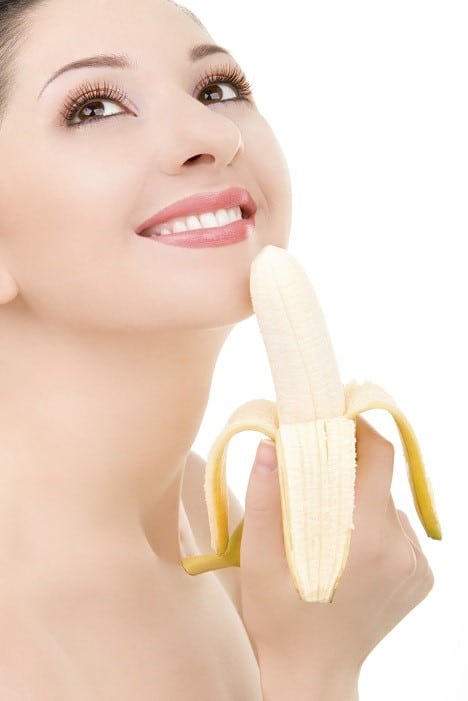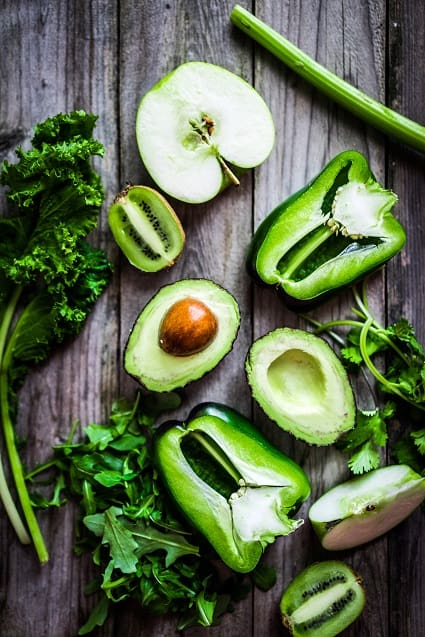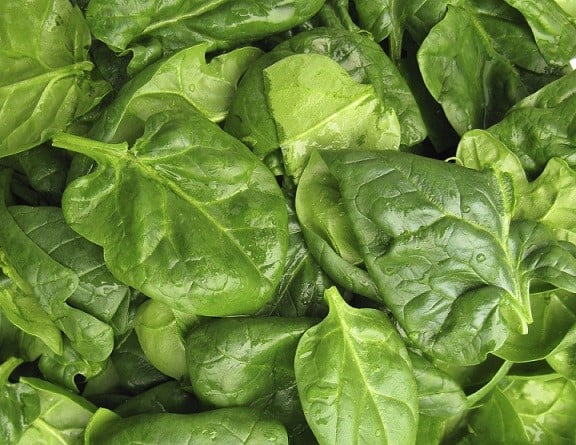Around every corner, there are countless vitamins, minerals and weird herbs peddled to unsuspecting acne patients…
…but one which is rarely discussed is vitamin B6, also known as pyridoxine. B6 was first discovered in 1938, and rather than one standout feature (like calcium and bones), has many minor functions around the body.
Vitamin B6 is involved with stomach acid production, red blood cell formation, it creates neurotransmitters and it maintains electrolyte balance. One study even found that vitamin B6 could prevent brain shrinkage by up to 90%.
Any business whose multivitamins don’t contain vitamin B6 is up to something seriously dodgy, but unlike zinc or selenium, there’s little evidence linking it directly to acne. Are there any hidden connections to acne which everyone has missed?
Vitamin B6 can prevent PMS-induced acne
The answer is yes, and the first is a connection to premenstrual syndrome.
PMS is the arch enemy of countless women with acne worldwide. The surge in estrogen and decline in progesterone during the luteal phase of the cycle leads to 1) oilier skin due to increased DHT production, and 2) disrupted insulin and glucose metabolism, again resulting in oily skin.
For many, the fear is real every month: PMS acne is an “uncontrollable” menace since the menstrual cycle cannot and should not be stopped.
But if you’re a newbie to clearing acne naturally, then good news. The acne induced by premenstrual syndrome CAN be controlled…
…and vitamin B6 may be one of the secret tools. For reference, the recommended daily allowance (RDA) for both men and women aged 19-50 is 1.3-2.0mg. According to a large 1999 review covering 9 individual studies, vitamin B6 megadoses of up to 100mg are extremely potent at treating premenstrual syndrome.
The vanquished symptoms included premenstrual depression, and side effects were non-existent. The average dose was 50mg, but up to 100mg of B6 performed substantially better than a placebo.
Could acne be another PMS symptom to be prevented? It’s extremely possible. In fact, back in the 1990s, the British government was worried about side effects and foolishly plotted to ban B6 supplements above 10mg; this very study helped to reverse the decision.
Read Annihilate Your Acne – get the diet that could transform your skin!
The explanation is that B6 helps to manufacture two neurotransmitters, dopamine and serotonin. Serotonin is the happiness hormone responsible for all feelings of pleasure and well-being, while dopamine is the king of motivation and addiction (slot jockeys have way too much). Of course, this makes vitamin B6 promising for acne even if you don’t have PMS, because stress is a huge pimple trigger.
B6 has one more hidden link to PMS – increasing the hormone progesterone.
The cycle goes like this: estrogen gets too high, which pushes progesterone down to insufficient levels. Because progesterone regulates the androgen DHT, your DHT and oil production get completely out of control.
High doses of vitamin B6 increase progesterone during the luteal phase of the menstrual cycle, preventing this deadly cycle. The surge in estrogen is also mellowed and delayed.
If you’re tired of a fresh acne outbreak arriving at the exact same time each month, vitamin B6 might be the solution.
Does vitamin B6 reduce oily skin in men?
What’s more, women haven’t monopolised the B6 market. There’s weak, but promising evidence that vitamin B6 can make androgenic hormones like testosterone less damaging.
This study fed high doses of vitamin B6 to mice; the result was that “elevated vitamin B6 concentrations” caused a 35-40% reduction in androgen receptor sensitivity.
B6 could thus help men and some women to achieve the holy grail of hormones: high testosterone levels for improved energy, sex drive, and mental performance, without that testosterone stimulating the sebaceous glands and causing oily skin. If the androgen receptors in skin cells were preferentially desensitised, rather than the ones important for health, then it would be a dream come true.
7 natural topical treatments which could transform your skin
Additionally, while scouring the internet I found several references to a study where 50-250mg of vitamin B6 (a megadose) reduced skin sebum production significantly, which supports the theory above. Acne fell by a colossal 75% in teenagers.
Only a donation-hungry corrupt scientist would call this evidence conclusive, but it’s extremely promising for B6 nevertheless.
B6 regulates a little-known acne-causing compound
Vitamin B6 now has a claim to fame, as controlling PMS isn’t a power offered by many other acne nutrients we’ve discussed here, such as vitamin C or selenium…
…and now we have an even more obscure benefit. Vitamin B6 can reduce homocysteine, one of the deadliest compounds in the human body.
Homocysteine is necessary in small amounts; it’s an amino acid created as a metabolite of another amino acid, methionine. The latter is found in meat, fish and eggs and is needed for many vital functions such as melatonin production.
Homocysteine can reconvert to methionine when dietary supplies run low, thus acting as a handy reserve supply. It can also be converted to cysteine, a dietary protein which helps to manufacture glutathione…
Why bread and pasta are a massive cause of acne
…but when homocysteine gets elevated, in a medical condition dubbed “hyperhomocysteinemia”, it becomes little more than a waste product. Homocysteine is linked to heart attacks, cancer, diabetes, infertility, strokes, depression and chronic pain.
Most importantly for acne, it triggers a free radical bonanza. Homocysteine collides with proteins, chemicals and cells and warps them, to trigger a flood which depletes your precious acne-clearing antioxidants.
Is there a solution? Relaxing is one, and eating different varieties of protein (not less) is another, but B6 can also keep homocysteine under control.
A 2015 study on mice found that those eating a diet deficient in vitamin B6 “had the highest homocysteine concentration in plasma and liver among groups”. They had significantly higher malondialdehyde levels, a classic marker of oxidative stress.
We also have a tidy explanation for the reduction: vitamin B6 facilitates the conversion of homocysteine to cysteine. B6 makes your homocysteine supplies more accessible for healthy purposes.
Homocysteine isn’t directly linked to acne, but it causes antioxidant deficiencies, one of the two root causes. B6 can control it.
Vitamin B6 may strengthen the skin
Homocysteine has a second, even more interesting power: dissolving your skin’s collagen supplies. That’s the main connective protein in the human body, which plays a massive role in ageing and the skin’s glow.
This old 1973 study found that in patients with elevated homocysteine, collagen crosslinks were significantly weaker. They tested the strength of collagen using industrial solvents, and the samples taken from high homocysteine patients dissolved much more easily.
Recently, the mechanism has come to light. It turns out that elevated homocysteine inhibits an enzyme called lysyl oxidase (study). The main job of lysyl oxidase? Cross linking and constructing collagen proteins.
Scan a few beauty websites and amateur skincare books, and you’ll discover references to homocysteine and collagen frequently. But strangely, few have taken the next step, and connected it to the dull and dead-looking skin which is an epidemic in our world today. Along with vitamin B12, B6 is the first call of doctors for reducing out of control homocysteine.
Do vitamin B6 megadoses cause acne?
However, we now hit a little snag. According to some acne forum dwellers, B6 is similar to B12: it can trigger a huge explosion of fresh acne when taken at levels dramatically above the RDA (more on the B12 controversy here).
Studies have confirmed the risk as far back as 1976. Vitamin B6 and B12 were tested on 14 acne patents, and all 14 experienced fresh eruptions of acne. The nature was described as well, consisting of numerous small papules and pustules. The chin and forehead were most severely affected, and the infection also spread to the upper chest and back
Most worryingly, women were particularly affected, which means that your epic attempt to control PMS once and for all could backfire spectacularly.
The saga continued in 1991 with a very similar study. The results: daily ingestion of vitamin B6 and B12 at high doses caused an acne rosacea outbreak which was untreatable with conventional therapies. The only successful therapy was removing the source in the first place, the B vitamin supplement.
Sea buckthorn oil – a natural secret for acne and oily skin
Does this scupper our grand acne plans? Only if you take 250mg in desperation, because the daily allowance is much smaller, at 1.7mg. A very conservative tolerable upper limit is 10mg per day. The improvements in PMS were produced using an average dose of just 50mg.
You’ll almost certainly never overdose from food; the average banana contains 0.4mg. Forget about food, and for controlling PMS, stay below 100mg to be safe.
What’s more, read this quote: “the acneiform rash generally fades within a short time after vitamin B6 or vitamin B12 treatment has been stopped“.
Even if your skin reacts badly for mysterious reasons, sending you hurtling into the pizza mode dimension, quitting the supplement instantly will solve the problem instantly.
It’s also possible that scientists confused the nutrients, attributing the outbreak from vitamin B12 to both of those nutrients. Many of the acne message board tales have a pattern: the complaints against vitamin B6 are sourced from B-vitamin complex pills, and not isolated B6 pills.
Is vitamin B6 a dastardly acne villain? Only if you’re foolish enough to take 200mg.
Myth alert, volume one
There’s a lot of blind myths about vitamin B6 circulating the internet, the first being that B6 can enhance the absorption of zinc. This would be excellent for acne if true, as zinc is the number one nutrient for controlling red and inflamed pimples.
This zinc absorption claim is everywhere, but there’s no hard data supporting it. The hype seems to originate from this study conducted on women, where copper, iron, and zinc were all tested in relation to their vitamin B6 status.
The results were conflicting as can be: zinc absorption and retention were significantly higher during vitamin B6 depletion. That’s the opposite of what the myth suggests, but serum zinc actually declined during deficiency. Somehow, the absorbed zinc failed to end up in the bloodstream.
The data is highly conflicting, but it’s clear that B6 and zinc lack the neat, tidy correlation which some suggest.
Myth alert, volume two
The second big myth floating around is that vitamin B6 is a cofactor in glutathione production, the body’s main self manufactured antioxidant (great for acne).
There’s actually a plausible mechanism here, as the amino acid cysteine is one of the main co-factors in synthesising glutathione in the liver. Vitamin B6 is used to convert methionine stocks to cysteine in case of a serious dietary deficiency. However, this is highly indirect, and would only ever work in certain circumstances. Cysteine is one of the rarest amino acids for people to be deficient in nowadays. Vitamin B6 isn’t a direct co-factor either, unlike selenium, zinc or magnesium, which are involved with glutathione’s very creation.
What’s more, the studies are extremely conflicting. Firstly, we return to the 2015 study on mice and homocysteine, and this clear quotation: “the glutathione peroxidase activities remained relatively stable in plasma and liver whether vitamin B6 was adequate, deficient, or supplemented”.
Meanwhile, a rat study from 1991 injected them with various harsh chemicals, causing sharp glutathione reductions in organs. With one chemical, B6 deficient rats had sharper reductions than normal rats, but when the toxic chemical diethylmaleate was tested, B6 had no effect.
If vitamin B6 affects your glutathione reservoirs, then it’s probably minor at best.
The official verdict
So there you have it. Vitamin B6 has two major benefits: 1) controlling homocysteine and 2) preventing PMS-induced acne. The risk to remember comes from megadoses.
The next question is how common B6 deficiencies are. Magnesium has a monstrous deficiency rating of 80%, while selenium is estimated to be about 35%. According to an “official” assessment conducted from 2003-2004 which tested 7822 men and women aged 1 or above, 11% had blood levels of vitamin B6 below the recommended level.
Specific groups were more at risk of deficiency, including:
- Women taking contraceptives.
- Women aged 20-34.
- African Americans.
- Male smokers.
- Men and women aged over 65.
There’s some fear over whether the average citizen eats only synthetic vitamin B6 added to cornflakes. But that’s bypassed here, because blood levels of pyridoxal phosphate (PLP, the bioactive form of B6) were directly tested.
What does this mean for your acne? It means that while vitamin B6 pales in comparison to vitamin E or zinc overall, there’s still a small chance that it’s the solution you’ve been dreaming of. A narrow subset of people could see large improvement, particularly women with PMS acne – 50mg would be the perfect dosage.
For everyone else though, it’s a case of getting your bases covered. Get the RDA, and any rampaging homocysteine will be put in check. This won’t clear your acne, but it’s yet another indirect danger which is worth eliminating, to bring permanently strong skin that’s immune to the occasional cheat day closer and closer.
Overall, vitamin B6 is a small-timer in the world of acne.
Your ultimate vitamin B6 strategy
Encompassing all the information above, here is your fool-proof strategy.
Firstly, check your multivitamin for vitamin B6. The dosage may be irrelevant; if it’s in the form of pyridoxine then you’re in trouble, because that’s an inefficiently absorbed synthetic form. The well-absorbed form is pyridoxine hydrochloride – that’s what you want. P5P, also known as Pyridoxal-5-Phosphate, is also acceptable.
If you don’t take a multivitamin, inspect your diet. The top vitamin B6-containing acne-friendly foods are…
- Sunflower seeds: 1.35mg per 100 grams. RDA = 2mg per day.
- Pistachio nuts: 1.12mg.
- Cooked tuna: 1.04mg.
- Turkey/chicken: 0.81mg.
- Lean pork: 0.79mg.
- Dried prunes: 0.75mg.
- Beef rib: 0.68mg.
- Banana: 0.37mg.
- Avocado: 0.29mg.
- Spinach: 0.24mg.
If you eat plenty of those foods, you’re in luck, but remember! The vitamin B6 added to cereals and breads by food corporations gleefully attempting to gain themselves a “healthy” image may well be the synthetic form. If your intake primarily comes from cornflakes, you may be in danger once again.
The best product
PMS-afflicted acne patients should definitely think about taking a b-vitamin complex, and my recommendation is this Garden of Life Vitamin Code Raw Vitamin B (amazon link).
For most people though, the safest option with B6 and all other B-vitamins is to take a multivitamin.
That’s what I personally do, because they all tend to contain 100% of the RDA for each one, covering all your baselines.
What product do I recommend? For acne, easily Garden Of Life, because it contains the perfect quantities of all vitamins, and they’re naturally derived. There’s no fuss about creating the perfect lab form of the vitamin, because it’s the nature-made version that we were born to digest.
Here is the men’s version (amazon link): Garden of Life Vitamin Code Raw One For Men.
Here’s the women’s edition (amazon link): Garden of Life Vitamin Code Raw One For Women.
The dosage of vitamin B6 is 2mg for both, 100% of the RDA. Also remember that vitamin B6 is a water-soluble vitamin, and is therefore barely stored in the human body (the liver retains a tiny reserve supply). You need enough vitamin B6 day after day, because after 24 hours your previous intake is almost gone.
NEXT: discover the root causes of acne and banish your pimples forever
Thanks for reading!





